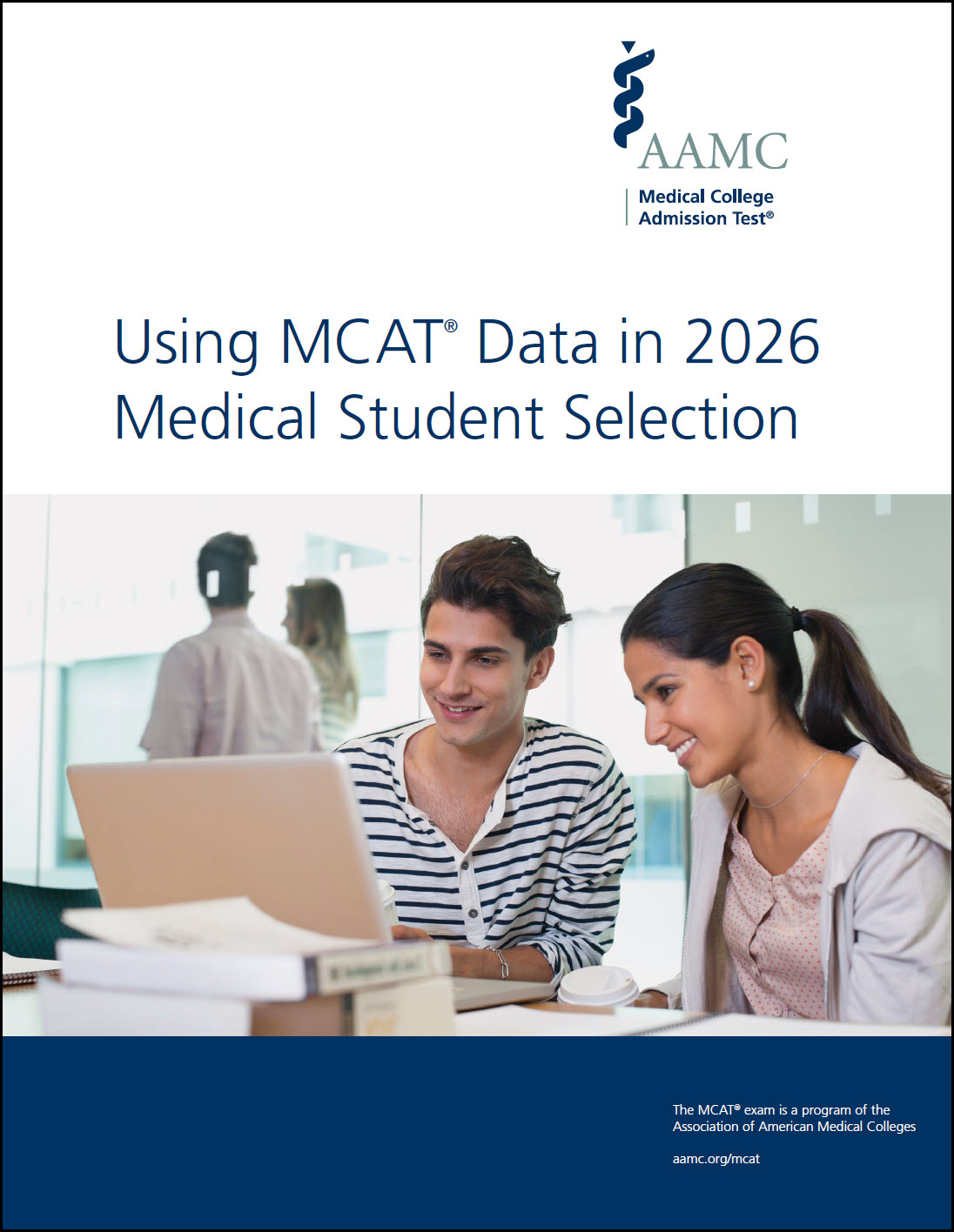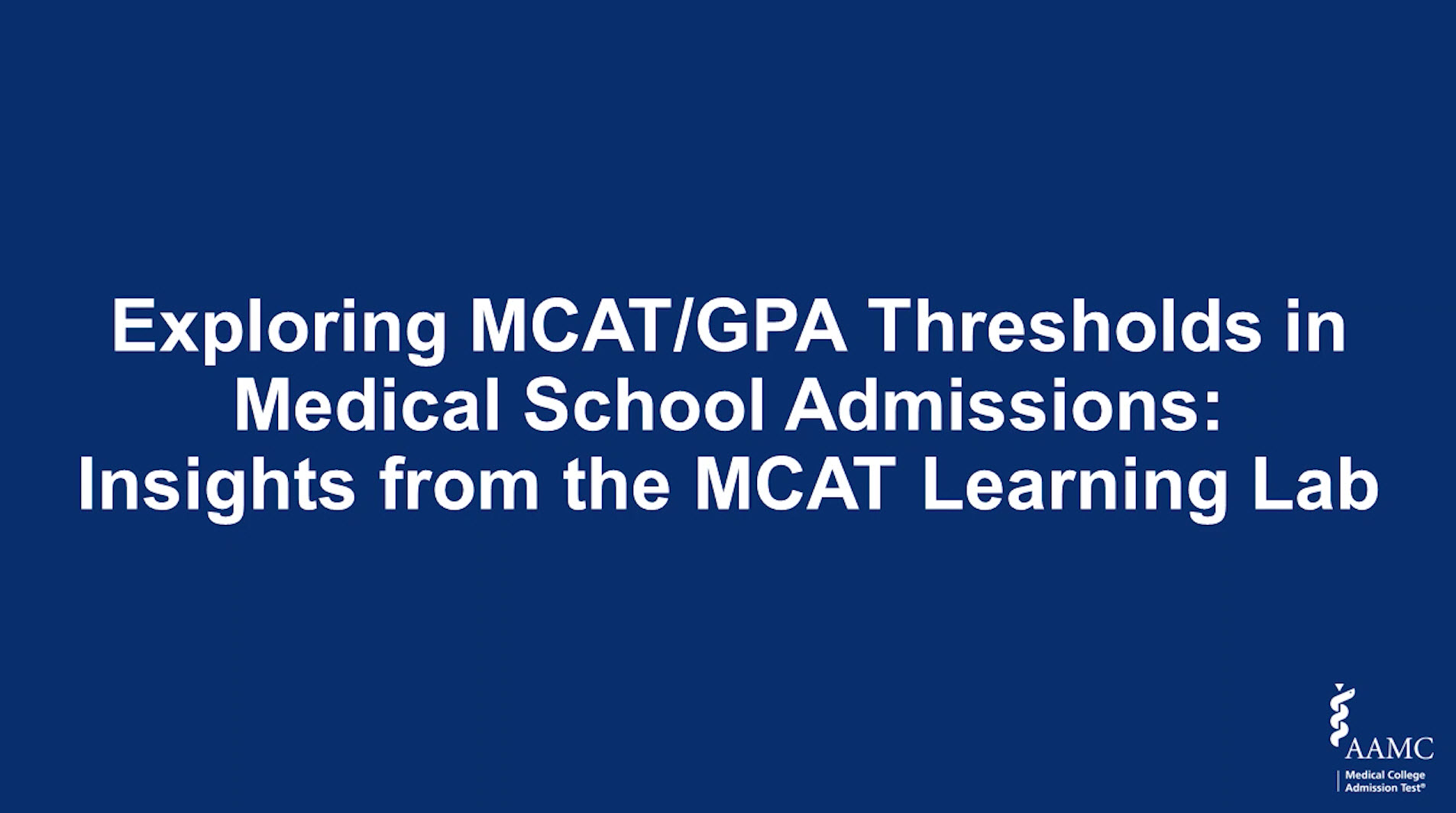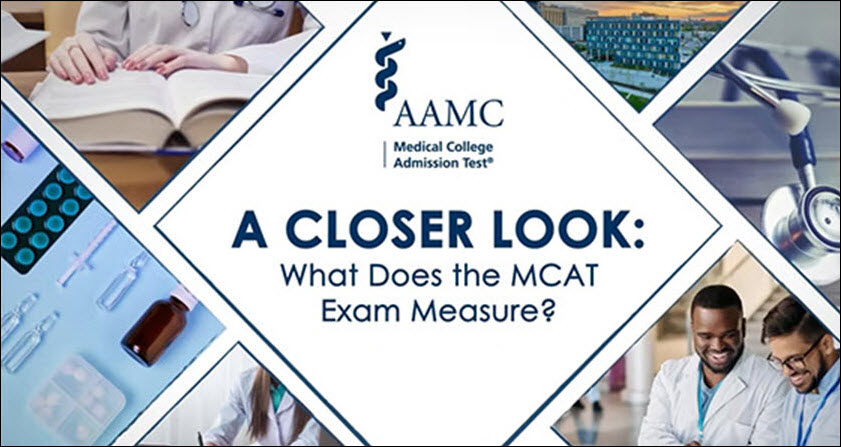- Professional Service
Tools and Resources for Using MCAT® Scores in Medical School Admissions
The tools and resources on this page are designed to help you use MCAT® scores and data in your admissions process.
Using MCAT Data in 2026 Medical Student Selection

This comprehensive guide presents information about how to interpret and use MCAT scores in the context of holistic review (PDF). The guide has been fully redesigned and contains updated information, tools, and data for use in the upcoming application cycle.
The guide summarizes the concepts and skills measured by the exam, characteristics of examinees and how they prepare for and perform on the exam, how admissions committees work with scores in admissions, and how well MCAT scores and undergraduate GPAs predict students’ performance in medical school.
The guide also provides the findings about the value of MCAT scores and undergraduate GPAs in predicting students’ performance in medical school. This includes data on how well MCAT scores and undergraduate GPAs predict students’ performance on the USMLE Step 1 and Step 2 CK exams on the first attempt or ever, their progression to year three on time or with an extra year, and their graduation from medical school within four or five years.
National Data on Medical Student Success Outcomes
Explore national data on medical student success outcomes from the most recent cohorts available. The data describe how well undergraduate GPAs (total and BCPM) and MCAT scores predict medical student performance on the Step 1 exam (first attempt and ever), the Step 2 CK exam (first attempt and ever), on-time progression to year three, progression to year three with an extra year, and graduation from medical school within four or five years.
Local MCAT Data Tools in AMCAS for Schools
Three new MCAT data tools are available to schools through the AMCAS for Schools website (login required). These data tools can be used to answer questions about your applicants and the students you admit, explore potential changes and new practices in your admissions process, and track progress over time.
- The College and Geographic Context Explorer is a map-based tool that shows important information about the regions and institutions your applicants come from. It combines AAMC, U.S. Department of Education, and U.S. Census data to help you better understand the undergraduate and geographic context of applicants during the recruitment and admissions process.
- The MCAT/GPA Thresholds Explorer is a scenario-planning tool that helps you analyze how different MCAT score and GPA cutoffs would impact your applicant pool. By examining your school’s closed cycle admissions data, you can see which types of applicants would be included or excluded if you were to change your MCAT/GPA thresholds.
- The MCAT Score/GPA Grid: Student Success Report is a customizable report showing how students with different MCAT scores and GPAs performed at your school. It tracks student success from USMLE Step 1 through graduation, allowing you to examine patterns between academic metrics and student outcomes over time.
To access these tools, log in to AMCAS for Schools. From the top menu bar, select AMCAS Reports, then Integrated Admissions Reports. For a demonstration of how to best use these tools for your school or for help with access, please email mcatadmissions@aamc.org.
Exploring MCAT/GPA Thresholds in Medical School Admissions: Insights from
the MCAT Learning Lab

In this video, representatives from three medical schools who participated in the inaugural MCAT Learning Lab discuss their approach to exploring and changing MCAT/GPA thresholds for their medical school admission processes. The initiative sought answers to pivotal questions: What issues are addressed by MCAT/GPA thresholds? Is reform feasible? What steps initiate change? Which levers can be used to drive this change and sustain a successful transformation? How should success be quantified?
A Closer Look: MCAT Microlearning Video Series

A Closer Look is a series of microlearning videos to help admissions officers and their admissions committees understand the content of the MCAT exam and how it is scored. These videos were created to help you and your committees consider MCAT scores as one element in your holistic admissions process.
Current MCAT Percentile Ranks
The percentile ranks provided on your applicants’ MCAT score reports show the percentages of test takers who received the same scores or lower scores on the exam. They show how the scores of your applicants compare to the scores of everyone who took the exam. Every year on May 1, the percentile ranks are updated using data from the most recent three years.
Explore the MCAT Score Report
The MCAT score report provides robust detail about an examinee's performance on the MCAT exam, including section and total scores, confidence bands, percentile ranks, and a score profile.
MCAT Validity Data Report
Read MCAT Validity Committee research findings on how well MCAT scores and undergraduate GPAs predict medical school performance from preclerkship through graduation.
MCAT Exam Repeat Policies and Data
Learn more about the MCAT policies for retaking the exam, how many examinees retake the exam, the average score gains and losses by repeat test takers, and the strategies admissions officers use for examining retesters’ scores.